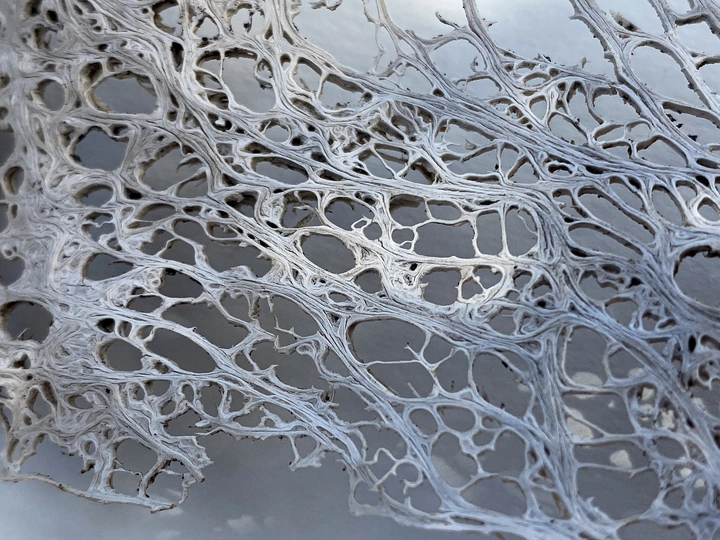Echoes of the light

Jovan Spasovic
Jovana Banović is a Serbian-born artist and designer based in Munich, with a background in archaeology and a deep interest in the intersection of nature, memory and material culture. She graduated from the University of Belgrade with a degree in Archaeology, where her focus gradually shifted toward design, photography, and visual storytelling.
In 2015, she founded spora_herbarium, a research-based artistic practice that explores relationships between humans, flora, and cultural memory. Her work begins with field journeys, often to islands, where she collects organic material, documents ephemeral experiences and builds tactile archives through herbariums, cyanotypes and analog photography.
Jovana’s practice is rooted in curiosity, intuition and a desire to participate in the quiet narratives that nature offers. Plants serve as both subject and tool, silent witnesses that carry ecological, emotional and symbolic significance. Through processes of recomposition and transformation, she creates speculative ecosystems and functional objects, combining scientific observation with artistic approaches.
Her work draws from cultural anthropology, psychology and cinema, playfully navigating the boundary between culture and nature.
While exploring the landscapes of La Gomera island, I came across a dried cactus leaf skeleton, delicate yet strong, carved by time, sun and wind. Its natural pattern captured my attention, showing how nature continues to tell stories of change and resilience even after life ends. I see landscapes as layers shaped by time and flora as silent witnesses to how ecosystems and human presence shape each other.
Instead of using the cactus directly, as I have in past work, I let it inspire a new design: a lamp. The goal wasn’t to copy the plant, but to translate its organic structure into something functional and meaningful. The lamp becomes a bridge between nature and daily life, connecting design with environmental awareness from collecting materials to learning from them, from preserving to reimagining. Starting with sketches, developing the idea into a 3D model and producing the first prototype using 3D printing.
The next step is to create a mold from this model, allowing me to experiment with different materials and explore the relationship between form, function and sustainability. The first final version of the lamp will be made using traditional ceramic techniques, in homage to ancient craftsmanship.
I also plan to explore other eco-conscious materials currently in the research phase. These include recycled paper mixed with natural binders (like cardboard pulp), 3D-printed bioplastics made from cornstarch or seaweed, and earth-based composites like paper clay.
This material research is a core part of the project. The aim is to develop a design that brings together aesthetic value, function, and environmental responsibility creating an object rooted in nature and oriented toward a sustainable future.